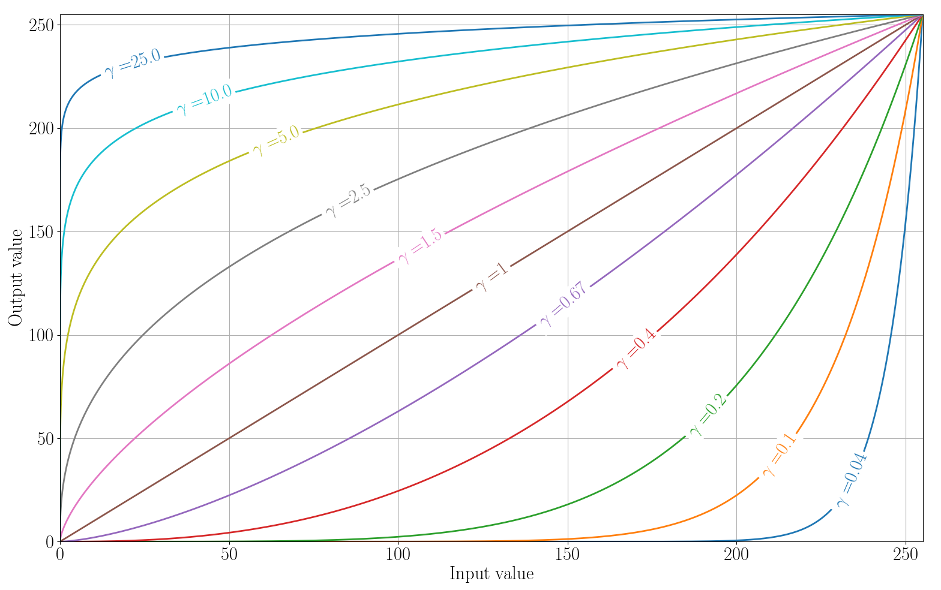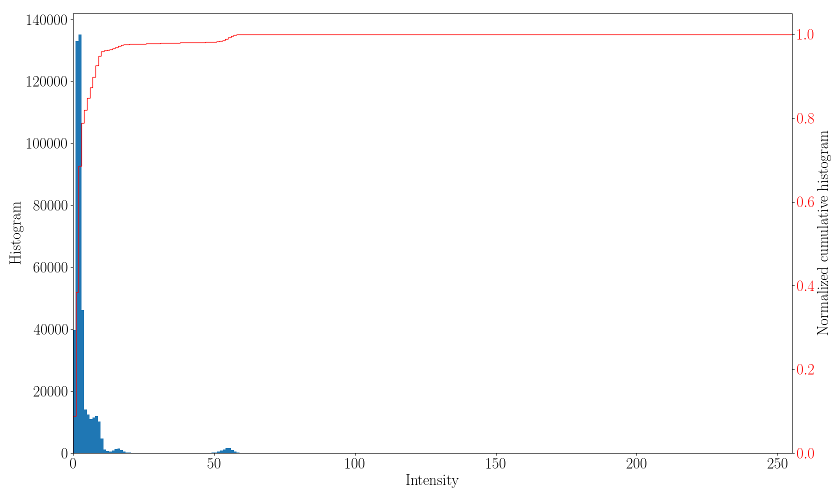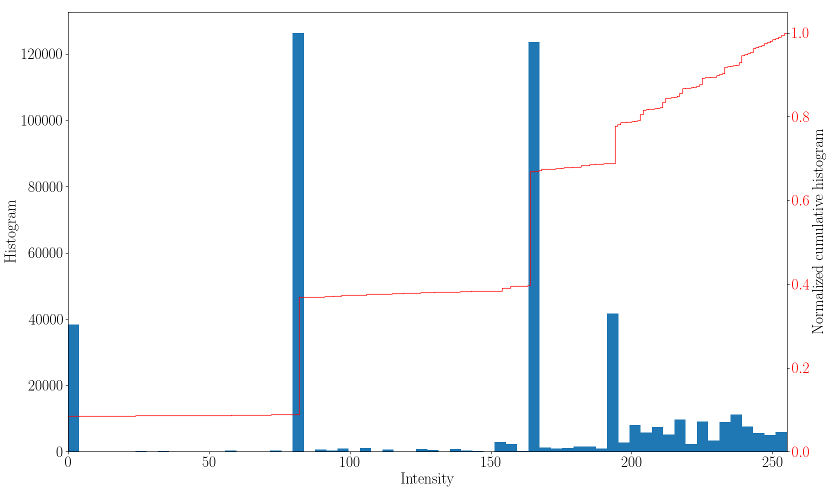While the ViSP library is not intended to be an image processing library or replace a raster graphics editor, some easy image processing techniques can be used to improve or adjust the brightness and the contrast of an image.
#include <cstdlib>
#include <iostream>
#include <visp3/core/vpConfig.h>
#include <visp3/core/vpImage.h>
#include <visp3/core/vpIoTools.h>
#include <visp3/gui/vpDisplayFactory.h>
#include <visp3/io/vpImageIo.h>
#if defined(VISP_HAVE_MODULE_IMGPROC)
#include <visp3/imgproc/vpImgproc.h>
#endif
#if ((__cplusplus >= 201103L) || (defined(_MSVC_LANG) && (_MSVC_LANG >= 201103L)))
#include <memory>
#endif
#ifdef ENABLE_VISP_NAMESPACE
#endif
#if defined(VISP_HAVE_MODULE_IMGPROC) && defined(VISP_HAVE_DISPLAY) && \
(defined(VISP_HAVE_PNG) || defined(VISP_HAVE_OPENCV) || defined(VISP_HAVE_STBIMAGE) || defined(VISP_HAVE_SIMDLIB)) && \
((__cplusplus >= 201103L) || (defined(_MSVC_LANG) && (_MSVC_LANG >= 201103L)))
namespace
{
const std::string &title, const std::string &filename_color, const std::string &filename_gray,
const std::string &title_2 = "")
{
if (!title_2.empty()) {
}
}
}
#endif
int main(int argc, const char **argv)
{
#if defined(VISP_HAVE_MODULE_IMGPROC) && defined(VISP_HAVE_DISPLAY) && \
(defined(VISP_HAVE_PNG) || defined(VISP_HAVE_OPENCV) || defined(VISP_HAVE_STBIMAGE) || defined(VISP_HAVE_SIMDLIB)) && \
((__cplusplus >= 201103L) || (defined(_MSVC_LANG) && (_MSVC_LANG >= 201103L)))
std::string input_filename = "Sample_low_brightness.png";
double alpha = 10.0, beta = 50.0;
double gamma = 3.5;
int scale = 240, scaleDiv = 3, level = 0, kernelSize = -1;
double dynamic = 3.0;
int scale_display = 2;
for (int i = 1; i < argc; i++) {
if (std::string(argv[i]) == "--input" && i + 1 < argc) {
++i;
input_filename = std::string(argv[i]);
}
else if (std::string(argv[i]) == "--alpha" && i + 1 < argc) {
++i;
alpha = atof(argv[i]);
}
else if (std::string(argv[i]) == "--beta" && i + 1 < argc) {
++i;
beta = atof(argv[i]);
}
else if (std::string(argv[i]) == "--gamma" && i + 1 < argc) {
++i;
gamma = atof(argv[i]);
}
else if ((std::string(argv[i]) == "--gamma-color-handling") && ((i + 1) < argc)) {
++i;
}
else if ((std::string(argv[i]) == "--gamma-method") && ((i + 1) < argc)) {
++i;
}
else if (std::string(argv[i]) == "--scale" && i + 1 < argc) {
++i;
scale = atoi(argv[i]);
}
else if (std::string(argv[i]) == "--scaleDiv" && i + 1 < argc) {
++i;
scaleDiv = atoi(argv[i]);
}
else if (std::string(argv[i]) == "--level" && i + 1 < argc) {
++i;
level = atoi(argv[i]);
}
else if (std::string(argv[i]) == "--kernelSize" && i + 1 < argc) {
++i;
kernelSize = atoi(argv[i]);
}
else if (std::string(argv[i]) == "--dynamic" && i + 1 < argc) {
++i;
dynamic = atof(argv[i]);
}
else if (std::string(argv[i]) == "--scale-display" && i + 1 < argc) {
++i;
scale_display = atoi(argv[i]);
}
else if (std::string(argv[i]) == "--help" || std::string(argv[i]) == "-h") {
std::cout << "Usage: " << argv[0]
<< " [--input <input image>]"
" [--alpha <alpha for adjust()>] [--beta <beta for adjust()>]"
" [--gamma <gamma for gammaCorrection()>]"
" [--scale <scale for retinex()> [--scaleDiv for retinex()]"
" [--level <level for retinex()> [--kernelSize <kernelSize for retinex()>]"
" [--dynamic <dynamic for retinex()>] "
" [--scale-display <display downscaling factor>] "
" [--help]"
<< std::endl;
return EXIT_SUCCESS;
}
}
d->init(I_display, 10, 10, "Brightness adjustment results");
std::stringstream ss_color;
ss_color << input_name << "_adjust_alpha=" << alpha << "_beta=" << beta << ".png";
std::stringstream ss_gray;
ss_gray << input_name << "_adjust_alpha=" << alpha << "_beta=" << beta << "_gray.png";
display(I_display, I_color_res, I_color_adjust, I_gray_res, I_gray_adjust, I_gray_display,
"Brightness and contrast adjustment. Click to continue.", ss_color.str(), ss_gray.str());
gamma = -1.;
}
if (gamma > 0.) {
}
ss_color.str("");
ss_color << input_name << "_gamma=" << gamma << ".png";
ss_gray.str("");
ss_gray << input_name << "_gamma=" << gamma << "_gray.png";
display(I_display, I_color_res, I_color_gamma_correction, I_gray_res, I_gray_gamma_correction, I_gray_display,
"Gamma correction. Click to continue.", ss_color.str(), ss_gray.str());
gamma = -1.;
continue;
}
gamma_method);
ss_color.str("");
ss_color << input_name << "_" << gamma_name << ".png";
ss_gray.str("");
ss_gray << input_name << "_" << gamma_name << "_gray.png";
display(I_display, I_color_res, I_color_gamma_correction, I_gray_res, I_gray_gamma_correction, I_gray_display,
"Gamma correction. Click to continue.", ss_color.str(), ss_gray.str(), gamma_name);
}
ss_color.str("");
ss_color << input_name << "_eqHist.png";
ss_gray.str("");
ss_gray << input_name << "_eqHist_gray.png";
display(I_display, I_color_res, I_color_equalize_histogram, I_gray_res, I_gray_equalize_histogram, I_gray_display,
"Histogram equalization. Click to continue.", ss_color.str(), ss_gray.str());
ss_color.str("");
ss_color << input_name << "_Retinex_scale=" << scale << "_scaleDiv=" << scaleDiv << "_level=" << level
<< "_dynamic=" << dynamic << "_kernelSize=" << kernelSize << ".png";
ss_gray.str("");
ss_gray << input_name << "_Retinex_scale=" << scale << "_scaleDiv=" << scaleDiv << "_level=" << level
<< "_dynamic=" << dynamic << "_kernelSize=" << kernelSize << "_gray.png";
display(I_display, I_color_res, I_color_retinex, I_gray_res, I_gray_retinex, I_gray_display,
"Retinex. Click to quit.", ss_color.str(), ss_gray.str());
#else
(void)argc;
(void)argv;
#endif
return EXIT_SUCCESS;
}
static const vpColor green
static bool getClick(const vpImage< unsigned char > &I, bool blocking=true)
static void display(const vpImage< unsigned char > &I)
static void flush(const vpImage< unsigned char > &I)
static void displayText(const vpImage< unsigned char > &I, const vpImagePoint &ip, const std::string &s, const vpColor &color)
static void convert(const vpImage< unsigned char > &src, vpImage< vpRGBa > &dest)
static void read(vpImage< unsigned char > &I, const std::string &filename, int backend=IO_DEFAULT_BACKEND)
static void write(const vpImage< unsigned char > &I, const std::string &filename, int backend=IO_DEFAULT_BACKEND)
Class that defines a 2D point in an image. This class is useful for image processing and stores only ...
unsigned int getWidth() const
void insert(const vpImage< Type > &src, const vpImagePoint &topLeft)
unsigned int getHeight() const
VISP_EXPORT void adjust(VISP_NAMESPACE_ADDRESSING vpImage< unsigned char > &I, double alpha, double beta)
VISP_EXPORT void gammaCorrection(VISP_NAMESPACE_ADDRESSING vpImage< unsigned char > &I, const float &gamma, const vpGammaMethod &method=GAMMA_MANUAL, const VISP_NAMESPACE_ADDRESSING vpImage< bool > *p_mask=nullptr)
VISP_EXPORT void equalizeHistogram(VISP_NAMESPACE_ADDRESSING vpImage< unsigned char > &I, const VISP_NAMESPACE_ADDRESSING vpImage< bool > *p_mask=nullptr)
VISP_EXPORT void retinex(VISP_NAMESPACE_ADDRESSING vpImage< VISP_NAMESPACE_ADDRESSING vpRGBa > &I, int scale=240, int scaleDiv=3, int level=RETINEX_UNIFORM, double dynamic=1.2, int kernelSize=-1)
VISP_EXPORT vpGammaMethod vpGammaMethodFromString(const std::string &name)
Cast a string into a vpGammaMethod.
VISP_EXPORT vpGammaColorHandling vpGammaColorHandlingFromString(const std::string &name)
Cast a string into a vpGammaColorHandling.
vpGammaColorHandling
How to handle color images when applying Gamma Correction.
VISP_EXPORT std::string vpGammaMethodList(const std::string &pref="<", const std::string &sep=" , ", const std::string &suf=">")
Get the list of available vpGammaMethod.
VISP_EXPORT std::string vpGammaColorHandlingList(const std::string &pref="<", const std::string &sep=" , ", const std::string &suf=">")
Get the list of available vpGammaColorHandling.
vpGammaMethod
Gamma Correction automatic methods.
VISP_EXPORT std::string vpGammaMethodToString(const vpGammaMethod &type)
Cast a vpGammaMethod into a string, to know its name.
std::shared_ptr< vpDisplay > createDisplay()
Return a smart pointer vpDisplay specialization if a GUI library is available or nullptr otherwise.
The brightness and the contrast of an image can be adjusted using a linear function:
The image below shows in x the input pixel values and in y the output pixel values as they would be transformed by a gamma correction function according to different gamma values.
ViSP proposes the implementation of several automatic computation of the gamma factor. Most of these methods are designed for gray-shade images, so ViSP proposes different way of handling the colors.
In the next figure, you can observe the histogram for the original underexposed photo where most of the pixel intensities are located in the [0, 30] range. The cumulative histogram distribution has a strong slope for very low pixel intensities.
The histogram for the equalized photo is displayed in the next figure. This time, the bins are spread more uniformally along the intensity range and the cumulative histogram distribution presents a more linear shape.


![]()
 value will behave as a gain factor and the
value will behave as a gain factor and the ![]() value as an offset.
value as an offset.
![]()





